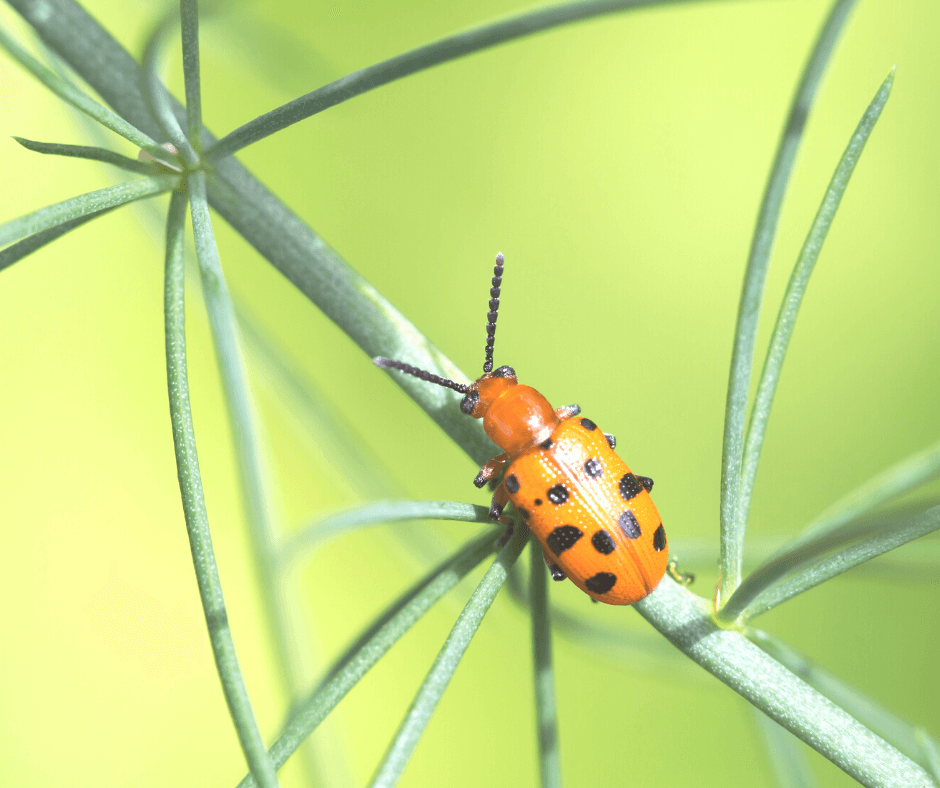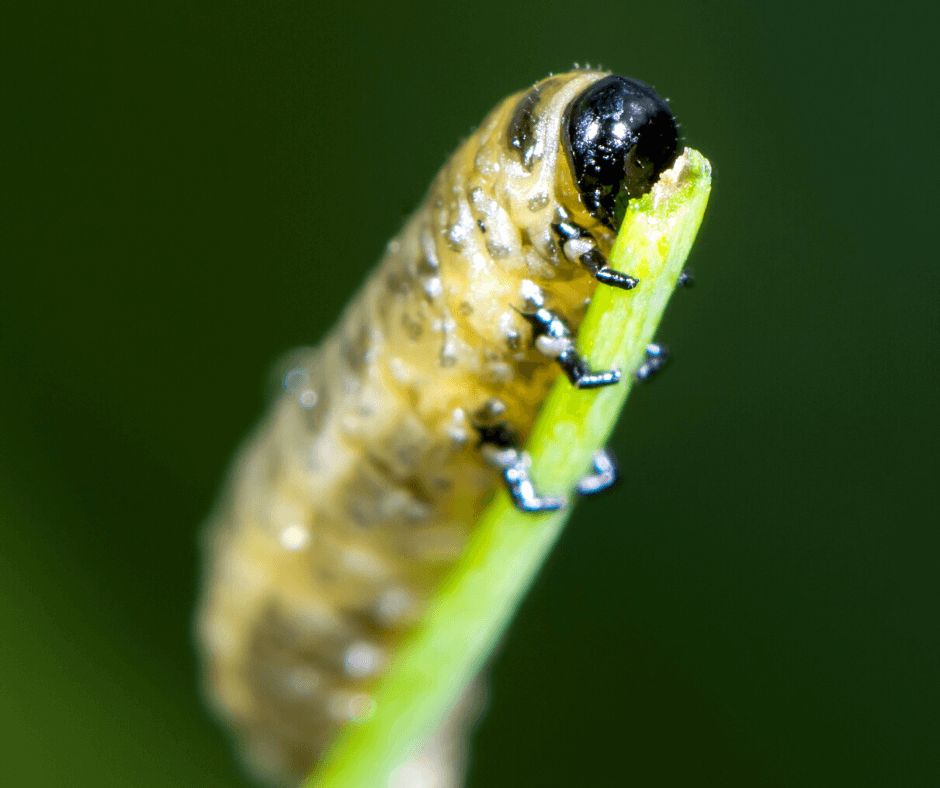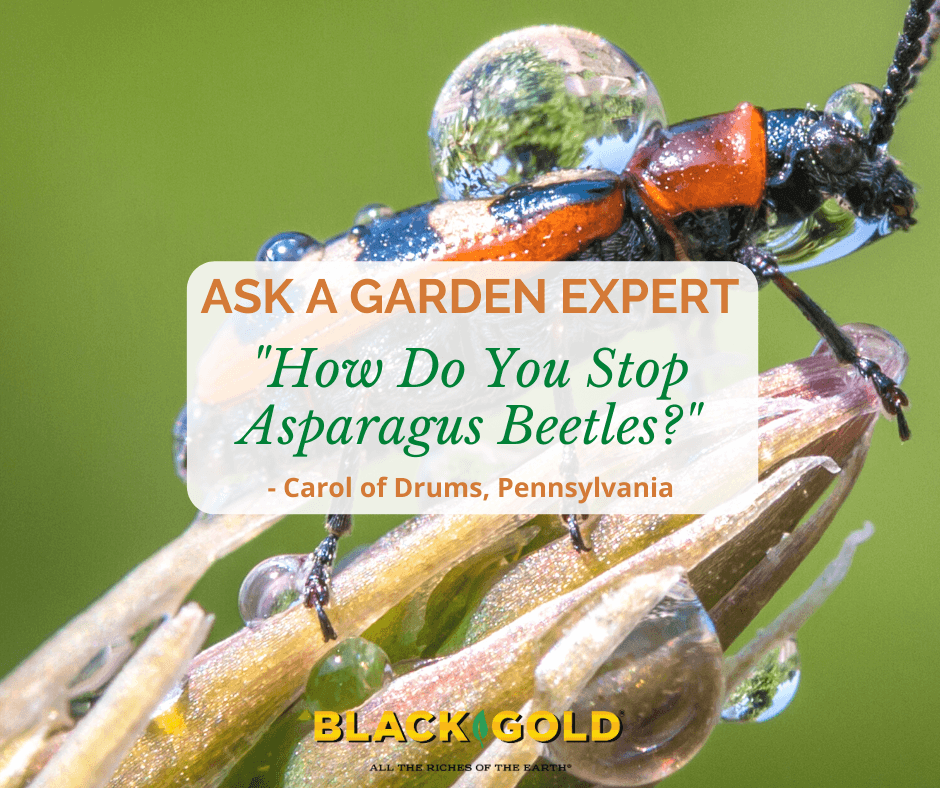“How can I prevent asparagus beetles from attacking and how can I get rid of them?” Question from Carol of Drums, Pennsylvania
Answer: There are several cultural things that you can do to manage asparagus beetles. There are two types with similar habits and damage, the black and white adult common asparagus beetle (Crioceris asparagi) and orangish-red spotted asparagus beetle (Crioceris duodecimpunctata). First, it is important to understand their life cycles.
Asparagus Beetle Life Cycle
- In early to mid-spring, as spears break ground, adult asparagus beetles emerge from sheltered areas along the ground and in trees.
- The beetles mate and the females lay spare rows of dark brown, oval-shaped eggs on spears of asparagus plants.
- Beetle eggs hatch in around a week and the small, translucent larvae start chewing on spears and foliage.
- The larvae feed for around two weeks before pupating in the soil below the plants.
- Pupation takes just a week, then the new adults emerge to start a new cycle. Cycles can last all season long.
Asparagus Beetle Damage

When adult beetles feed on spears, the spears turn brownish-green and the tips bend and look hook-like. Scarring will occur along the asparagus spears from larval chewing. The larvae and adults will continue to feed on the foliage all season long, weakening the plants and increasing beetle populations. The damage also weakens an asparagus plant’s immunity, making it more susceptible to fungal disease.
Managing Asparagus Beetles

Good timing and dedication are needed to remove these pests from your garden. Here are the removal steps that I recommend.
- Look for eggs and beetles early in the season and daily as soon as the spears start to emerge and during harvest season.
- Scrape off and smash the eggs, and pick off the larvae and adults and place drown them in a dish of soapy water.
- Time your pest search well. Asparagus beetles are most active in warm, afternoon weather, while the best time to look for new eggs is in the morning.
- Large asparagus beetle populations might need the addition of a pesticide. Neem oil is approved for organic gardening and has been shown to be effective on plants for several days.
- Finally, harvest spears as soon as you can and snap them all the way to the ground to keep beetle food sources down.
- Keep beds clean, weeded, and remove beetles, eggs, and larvae as you see them. (Click here for additional tips about weeding and feeding asparagus.)
I hope that these tips help!
Happy gardening,
Jessie Keith
Black Gold Horticulturist


